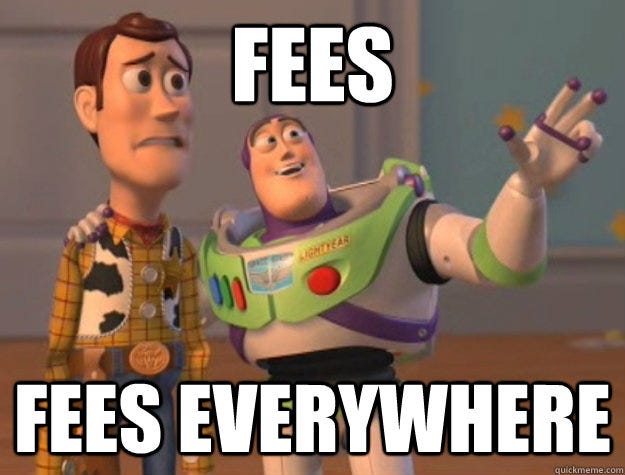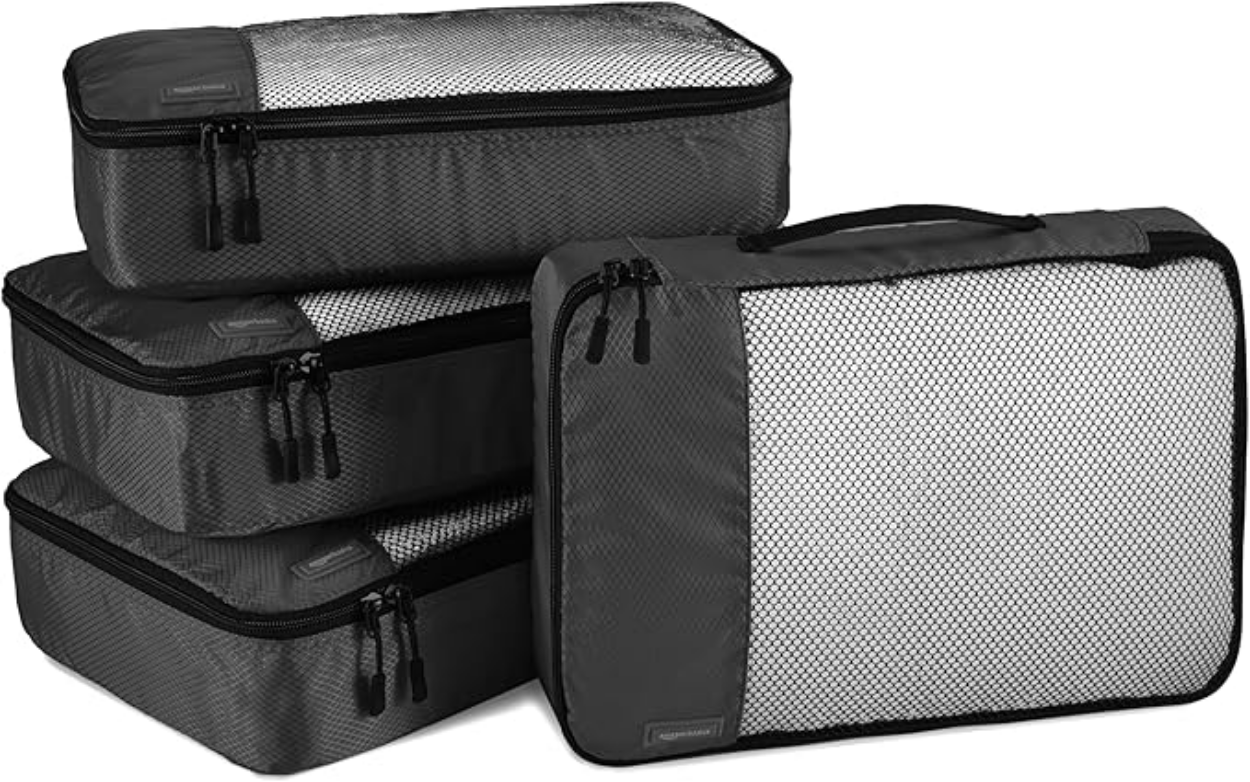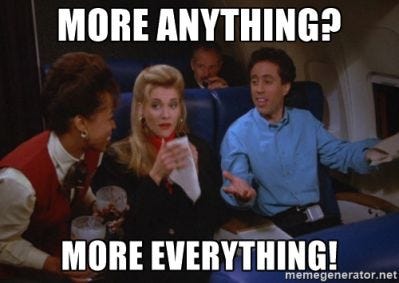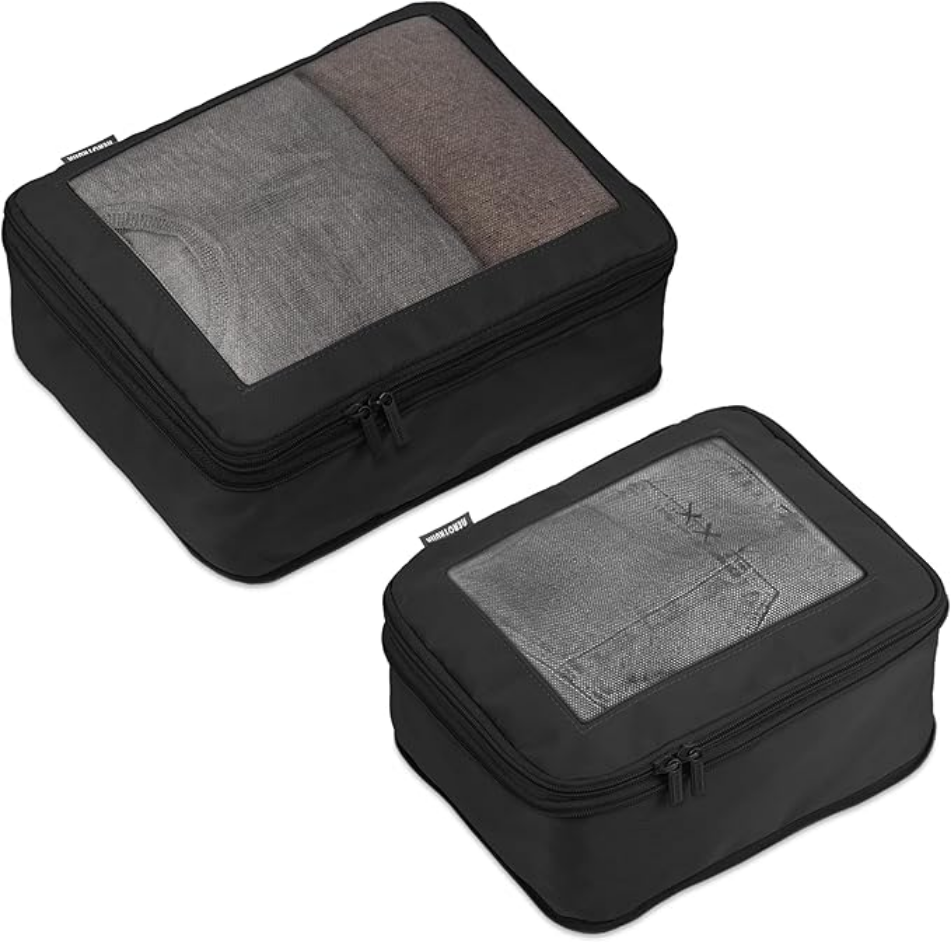Papa's Got A Brand New Bag...Fee
Discover effective strategies to avoid rising airline baggage fees. Learn when to carry on or check your luggage for a hassle-free travel experience.

Every month, I make my usual visit to Costco. The layout of the store is like a racetrack, and it has a way of captivating you as you navigate through it. You can't help but question whether you truly "need" all the products you encounter on your way to the produce section at the back. It's a brilliant strategy on their part. On this particular visit, while I was on my way to pick up my regular monthly items, I unexpectedly came across a set of suitcases. Since my old set had taken quite a beating from all the road trips and flights I've been on, I decided to purchase this new set. The set included a spacious carry-on suitcase and a larger suitcase for checking in. This got me thinking about the countless flights I've been on where I've witnessed passengers cramming the overhead compartments with their larger suitcases, claiming them as carry-on bags. It's a complex issue because this practice can potentially cause delays for others. However, considering that airlines are continuously increasing baggage fees, can we really blame these passengers? Or is it simply easier to pay the fees?
Why Do Baggage Fees Exist?
Baggage fees were initially introduced to optimize space utilization on airplanes. Airlines realized that by charging passengers for stowing their bags on flights, they would encourage travelers to carry their bags onto the plane. SimpleFlying provides an insightful overview of baggage fees, highlighting their original purpose of enhancing efficiency:
The original reason for baggage limits was a lack of space. Early aircraft did not have room for much cargo and travelers were asked only to carry what they could hold or stow in the limited room available. As air travel became more popular and cargo bays emerged on jets, airlines began prioritizing carrying mail and other freight and transporting passenger luggage. Even until the 1970s, ticket prices were high enough for airlines to offer generous baggage policies to all travelers.
However, as flights became more commonplace, airlines were suddenly facing a challenge: how to carry so many bags. This led to the advent of baggage policies, asking travelers to only bring a fixed number of bags or maximum weights depending on the class of service. It wasn't until European low-cost carriers came around that the idea of charging for any checked luggage even became a feasible idea.
With the rise of competition in the airline industry, prices have become more affordable. However, the overall cost of flying has remained constant and even increased over time. Low-cost carriers and legacy carriers have distinct business models. Low-cost carriers offer a basic fare to secure a seat on the plane, while additional services like checked bags, legroom, etc. come at an extra cost. On the other hand, legacy carriers have adopted a modified version of this model, providing fewer add-ons but more inclusive amenities.
Nevertheless, both types of carriers share one common aspect: baggage fees. Why? The answer is simple: revenue. And not just any revenue, but a significant amount of revenue! According to Forbes, the airline industry earns a staggering $30 billion PER YEAR from baggage fees alone:
A recent study by ancillary revenue specialists IdeaWorks reveals airlines earned $117.9 billion from extras, including onboard sales, baggage charges, seat selections, and loyalty programs last year.
Airline revenue from baggage fees surged to $33 billion. This is a significant 15% increase over the $29 billion airlines earned from bags in 2022 and exceeds the $32.9 billion in baggage fee revenue airlines made in 2019, pre-COVID.
Baggage fees, which includes money charged for checked luggage, overweight bags, and in some cases, for larger carry-on items, have long been a significant ancillary income category helping airlines offset the rising costs of fuel.
Baggage fees undoubtedly contribute significantly to airlines' revenue, yet they have a ripple effect as some passengers opt to pay the fee while others choose to save a few dollars and bring their bags onboard. So, what’s the best option?


Packing Cubes for Travel-Extra Large Luggage Organizers 7 Piece Set-Ultralight, Expandable/Compression Bags for Clothes by TRIPPED Travel Gear (National Parks)
HOW MUCH DOES EXTRA LARGE SET HOLD? Extra Large packing cube holds approx 3 Mens Large Tshirts, Large puffy jacket, 2 long sleeve large shirts, one pair jeans, one pair mens pants. Large compression cube holds 2 mens tshirts, 1 pair mens pants, and 2 long sleeve shirts. Small compression cube holds about 8 womens shirts. Tube cube holds electronics, toiletries, underwear or swimsuits. Laundry bag is great for dirty clothes or shoes.
The Pros and Cons of the Carry-On
It is completely understandable why you would prefer to travel with just a carry-on bag. Whether you are going away for a week or just a few days, or if you have took my advice and packed smartly and don't have a lot of belongings, it makes perfect sense. It is a financially wise decision, as it allows you to save that money for other enjoyable experiences during your trip, such as a nice dinner or drinks on your first night or a tour of the city. Additionally, by avoiding checked baggage fees, which can now cost as much as $45 per flight, you can accumulate significant savings! Furthermore, there is a common perception that passengers with carry-on bags tend to slow down the boarding process as they struggle to fit their large suitcases into the overhead bins. However, this is not the case when you have a well-packed carry-on. You can simply proceed to airport security, where you can easily pass your carry-on bag through TSA screening. Then, you can proceed directly to your flight and place your bag in the overhead bin. Upon arrival, you can quickly retrieve your bag on your way to your rental car or chosen mode of transportation to your destination. This not only saves you valuable time but also eliminates the need to wait for your luggage to be delivered on a conveyor belt, hoping that it arrives promptly. It is no surprise that many people choose to travel with carry-on luggage, as it offers both financial savings and time efficiency. You can also relax knowing that your luggage will be right by your side, no matter where you go.


TravelWise Packing Cube System - Durable 5 Piece Weekender Plus Set (Silver)
The TravelWise 5-Piece Packing Cube Set is an essential travel accessory that allows clothes to stay folded and neat when packed in their own “small drawers”. Constructed with lightweight and durable nylon, these multi-sized packing cubes compartmentalize similar items such as shirts, pants, underwear, swimsuits, and electronic accessories to streamline packing and maximize all available space in your suitcase or bag. The breathable, open mesh panel allows you to easily view what’s inside each cube without unzipping them, so you won’t have to frustratingly search for missing items. Perfect for short and long trips, clothes also have less room to shift, which means less wrinkling and more time to relax on your trip. These travel packing cubes are available in 9 unique colors that allow each traveler to easily keep track of their own luggage. Two-way easy-pull zippers make opening and closing these luggage cubes simple and fast. Each set includes one small, medium, and large cube to organize different sized items.
The Pros and Cons of Checking In Your Bag
It also makes perfect sense why you might want to check in a bag too. By doing so, you're paying a fee to have your luggage stored in the cargo hold of the plane. You arrive at the airport, head to the check-in area that offers both self-serve kiosks and personal service options. Here, you can not only check in your bag but also print your airline tickets and take care of other services before your flight. A sticker is printed out for you to wrap around your luggage handle, then you submit it to a designated TSA area that deals with luggage - and that's all! You can move on to airport security, pass through TSA, and then relax at a coffee shop, bar, or restaurant before your flight. You can do that with a carry on as well, but it will be a longer run through airport security and you will have to keep track of your carry-on luggage everywhere you go. Besides maybe a purse or backpack, that's all you need to bring with you on the plane. Once your flight is done, you can head to baggage claim to retrieve your luggage. But what if your luggage goes missing? Well, that's entirely the airline's responsibility, not yours! You're paying the airline to handle your luggage. Checking in your bag is especially convenient in winter, and on crowded flights (which are more common than not), you won't feel pressured to check in your bag to save space in the overhead bins.


Amazon Basics Lightweight Packing Cubes for Travel, 4 Piece Set With Double Zipper Pulls and Mesh Top Panel, 100% Durable Polyester, Medium, Black
Amazon Basics 4 Piece Packing Travel Organizer Cubes Set - Medium, Black
Where do you fall in the baggage fee debate?
There are probably just as many travelers who prefer to check in their luggage as there are those who prefer to carry it on. The airline industry makes over $30 billion per year from baggage fees, so it's clear that both options have their supporters. Carrying on your luggage gives you the freedom to easily get on and off your flight, while checking it in gives you peace of mind knowing that the airline is responsible for it. Each choice has its pros and cons, and although baggage fees have increased a lot in recent years, there are ways to avoid them. One option is to get a credit card from the airline you frequently use, as many of these cards offer free checked bags. Another option is to book a business or first class ticket, which usually includes checked bags in the higher fare. Alternatively, you can fly with Southwest, as they don't charge for checked bags as part of their base fare. I tend to do a mix of all of the above, I use co-branded credit cards, fly with Southwest, and fly business or first class whenever I can. Baggage fees may be annoying, but they do give you the freedom to choose how you want to travel. After all, you worked hard to get that nice set of suitcases, and most importantly, to go on that trip!


Compression Packing Cubes for Travel - Luggage Organizer Bags - Double Zipper Packing Cubes for Suitcases (2-Pack, Black)
PACK FASTER & ORGANIZE YOUR SUITCASE BETTER - An assortment of sizes (2PCS, 4 PCS or 6 PCS Set) allows you to keep your personal items well-organized and pack much faster than before. When it's time to unpack, simply place these travel cubes into the hotel drawers or closet.






